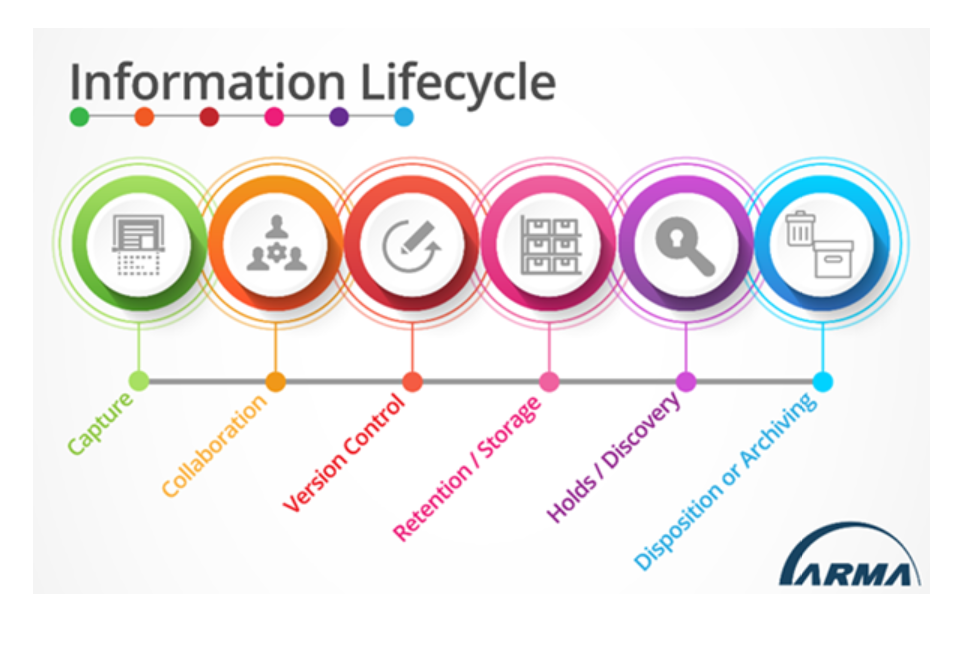What’s Next in Information Governance? Continuous Audit and Analytics

While it has been said that there is no one-size-fits-all solution for information governance (IG). – What is less often said, but equally valid, is that one-off approaches to IG are no longer recommended. IG cannot be a thing that you do once and then leave alone and expect ongoing success. No, it is ARMA’s suggestion that IG be an ongoing approach, one that is continuously applied and improved over time.
While most companies have previously employed point-in-time establishment of IG, there are now processes that can be established that take your point-in-time planning and set in motion an ongoing process for audit and analytics – improving IG outcomes in real-time.
ARMA recently published a white paper, How to Take Your IG Program to the Next Level with Continuous Auditing and Analytics, exploring and addressing this topic, in depth, along with ARMA business partner, ASG Technologies.
In the white paper, there are outlaid multiple paths that companies are currently undertaking to achieve IG. The paper refers to “siloed” approaches that attempt to segment IG-related efforts across different departments or functions. Siloed approaches lead to “inconsistent or duplicative efforts or worse — serious compliance issues.”
Another version of the same approach which is often encountered are “point-in-time” approaches – creating an IG program as a series of “one-off” projects. While this yields better results than siloed approaches (unless you are combining the two), creating an organization-wide strategy only to have to redo the work when problems appear later, is also not a suggested approach.
No, the modern approach is one of continuous IG – and it can help shift your approach to information from a tactical approach to one that is strategic. IG can deliver clear and actionable insights that can be acted upon in real-time, to shift and adjust and improve, as you more successfully meet your organizational objectives for IG.
As the white paper explains, but in more depth,
“Continuous auditing and analytics is a methodology — an approach to handling organizational information. It is a full lifecycle-approach essential to governing your information well because it informs you about the state of your information in real time (e.g., what it is, where it is, how it is being handled, whether there are discrepancies, etc.) so you can take appropriate actions against it at all points throughout the information lifecycle.”
This approach also helps align IG with a related approach that many have undertaken in information management, the tactical execution of IG, the strategy – information lifecycle management (ILM). In an ILM approach, an information professional maps the specific tactics employed as a piece of information moves through an organization and what changes during the different stages. This tactical execution of ILM should be taking direction from IG, and in most organizations, it has. Where it has fallen short though is in the ongoing assessment of the strategy – which, without continuous auditing and analytics, wasn’t feasible or possible. Now, it can be made possible.

Most organizations cannot simply take a day-one forward approach towards IG without also looking at a related clean-up process of existing information. As the white paper addresses, “…a good go-forward strategy must be married to the cleanup approach. Whichever approach you start with, cleanup or go-forward, you will almost certainly be able to repurpose the information you learned to the other side of this two-pronged approach.”
One of the major benefits of a continuous audit and analytics approach is the ability to perform information reconciliation tasks. Information reconciliation happens when you compare information in two or more sources against one another or against some criteria you define in order to find discrepancies. When a discrepancy is found, it can be corrected or elevated. Through the use of software, information reconciliation can happen in real-time and corrections can be made before their impacts are felt – or, in most cases today, an error is identified and a human is involved to help solve it.
In the white paper, benefits of a continuous audit and analytics approach to information governance are explained – they’re numerous and compelling. If one is seeking to determine what’s next in the world of information governance, this is very likely the answer.
To learn more about this topic, download How to Take Your IG Program to the Next Level with Continuous Auditing and Analytics, a free white paper developed by ARMA International in conjunction with ASG Technologies, or view the webinar, Take Your IG Program to the Next Level with Continuous Auditing and Analytics.
About the Author
 Information Governance2022.07.18The IGP Exam: New and Improved
Information Governance2022.07.18The IGP Exam: New and Improved Analytics2021.02.01What’s Next in Information Governance? Continuous Audit and Analytics
Analytics2021.02.01What’s Next in Information Governance? Continuous Audit and Analytics Information Governance2020.11.19Information Governance: Alignment with Business is Essential
Information Governance2020.11.19Information Governance: Alignment with Business is Essential Information2020.09.11New Podcast Series Focuses on the Careers of Women Leaders in Information Governance
Information2020.09.11New Podcast Series Focuses on the Careers of Women Leaders in Information Governance